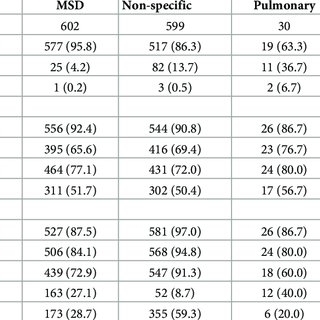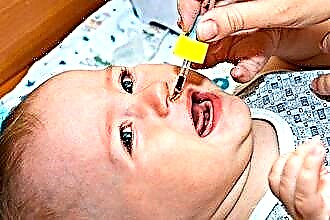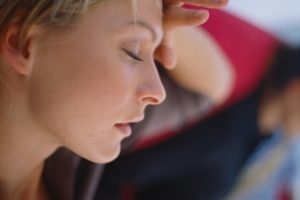Always at the moment of strong feelings or against the background of physical exertion, our pulse quickens, but we do not pay such attention, because in such a situation it is considered a physiological reaction of the body. But there are a number of diseases that are characterized by an increasing heart rate. One of these pathologies, accompanied by dysregulation of internal organs and the vascular bed, is vegetative-vascular dystonia. What should be the effective treatment of tachycardia with VSD? Let's talk about the recommendations of leading experts.
Why is there tachycardia with VSD?
Vegetovascular dystonia is traditionally considered a neurological pathology. But a patient with this nosology can turn to not only a therapist or family doctor, sometimes patients go immediately to a cardiologist, gastroenterologist. It all depends on the leading symptomatology. Why are the manifestations of VSD so diverse?
Let's first go a little deeper into the anatomical subtleties of the problem under discussion. Our nervous system is divided into the somatic, which is responsible for skeletal muscles (respectively, and movements), as well as the autonomic, which controls the activity of internal organs and the vascular bed. Therefore, any failures or inadequacy in the work of the latter will lead to disruption of the functioning of almost the entire organism. Hence the diversity of the clinical picture in patients with VSD.
The vegetative division, in turn, is subdivided into sympathetic and parasympathetic. The first "enters the arena" during wakefulness and in stressful moments (it is he who causes the appearance of tachycardia), and the second, on the contrary, dominates during periods of rest.
Normally, these antagonists are in harmony, alternately replacing each other. But there is such a disease as VSD, in which the physiological balance is disturbed. The course of the pathology is most often paroxysmal. Paroxysms are accompanied not only by an increased heart rate, but also often pain in the stomach, a lump in the throat, a feeling of lack of air, tremors in the body, sweating. Simply put, they manifest themselves as a whole "bouquet" of symptoms, which in each patient make up their own unique clinical picture.
As a result, the imbalance described above arises, at the moment it is not known for certain. We can only state the fact of a decrease in the influence of the cerebral cortex on vegetation, because of which it begins to "live its own life." Most physicians are inclined to believe that psychogenic factors play a key role in the development of nosology, that is, it is formed against the background of emotional disorders.
For more information about the causes, symptoms and treatment of VSD, see the video at the link below.
Feeling tachycardia in oneself, one should not immediately attribute it to dystonia. After all, it can occur against the background of physiological conditions, for example, pregnancy. And often an increase in heart rate accompanies anemia, osteochondrosis, an increase in body temperature in infectious diseases, etc.
What types of tachycardia with VSD occur most often
During an attack of vegetative-vascular dystonia of a cardiac orientation, that is, manifested by cardiac symptoms, there are two types of tachycardia (increased heart rate over 80 beats / min). This is sinus, in which impulses come from a physiological pacemaker, and paroxysmal supraventricular. The latter is characterized by the presence of a pathological focus of excitation generation along the path of the discharge from the atria to the ventricles.
Both rarely occur as an isolated symptom. In most cases, the sympathoadrenal crisis is accompanied by a bursting headache, severe nausea, turning into vomiting, fear, tremors in the hands.
In this section of the article, I would like to answer one of the frequently asked questions: can the VSD and the tachycardia associated with it become “getting rid” of the army. In some cases, pathology is indeed an obstacle to service. But only when paroxysms occur at least once a month and are accompanied by a bright clinic (fainting, pain in the heart, which does not diminish after taking medications). And, most importantly, all of the above must be necessarily recorded by doctors in writing, and also supported by all kinds of examinations.
Clinical case
A week ago, during my watch, the ambulance brigade delivered a pregnant woman A., 24 years old. She complained of a feeling of lack of air (as the patient put it: “I cannot breathe in deeply”), palpitations, lump in the throat, nausea, single vomiting, anxiety, trembling in the body and chills. From the anamnesis given by the paramedic, it was possible to find out that the woman was taken from the street, where, after a quarrel with her husband, she felt the above symptoms. Objectively, the patient was emotionally labile, she went from crying to tears. Pale skin, heart rate - 94 beats / min, rapid breathing up to 22-24 respiratory movements per minute, hyperhidrosis of the palms and feet, tremors in the fingers. The rest - no peculiarities. Preliminary conclusion: "VSD, paroxysmal course."
The following diagnostic methods were used: clinical analysis of blood and urine, biochemical analysis of blood, ECG. A gynecologist was called for a consultation. No deviations were found during the survey. The patient was admitted to the neurological department, where Glycine, a tincture of valerian, was prescribed. The next day, she was referred to a neurologist for examination, where she continued treatment.
How to solve the problem
There is no single advice on how to get rid of tachycardia with VSD.
Indeed, despite the huge number of various diagnostic methods, organic changes in this pathology cannot be detected. Simply put, it is not clear which structure needs to be influenced in order to eliminate absolutely all the symptoms of the disease.
Therefore, treatment usually boils down to:
- an attempt to eliminate the factors provoking paroxysm. And there are actually quite a few of them, and they are individual for each patient. Some patients are more responsive to a sharp change in the weather, that is, they suffer from meteorological dependence, others are prone to more frequent attacks against the background of overwork, diet disturbances, etc.;
- taking symptomatic remedies. This refers to drugs that eliminate a specific manifestation of VSD. For example, if it is nausea, then metoclopramide is prescribed. We will talk about medicines that slow down the pulse a little later;
- rational psychotherapy. Do not be surprised and do not leave the doctor who suggested that you visit a psychologist or psychotherapist after a series of examinations. The observed pathology always has an emotional background.
VSD, the main manifestation of which is tachycardia, is often referred to as cardioneuroses. You can read more about them here.
Do medications help
Correctly selected complex treatment will allow to achieve stable remission of vegetative-vascular dystonia. Based on current clinical guidelines and advice from leading experts in this field, it should include:
- symptomatic therapy;
- psychotropic drugs;
- work with a psychologist or psychotherapist, art, animal therapy;
- rational physical activity (swimming, Pilates, yoga);
- physiotherapy techniques.
When the main symptom of VSD is tachycardia, it is necessary to take beta-blockers - Propranolol, Bisoprolol, Anaprilin. But they should only be used to relieve an attack.
You cannot ignore a symptom such as an increased heart rate, even if it does not cause you discomfort. Indeed, at the same time, our heart works unproductively, its chambers do not have time to sufficiently fill with blood, therefore, despite the fact that our "pump" is contracting faster, the body does not receive enough oxygen and nutrients, and the myocardium wears out.
Glycine, Phenibut, Afobazol, Adaptol, valerian tincture, etc. become the drugs of choice that stabilize the emotional background of the patient with VSD at the initial stages. Taking these drugs against the background of adequate psychotherapy usually leads to persistent long-term remission.
Physiotherapy techniques to restore the balance between the activity of the sympathetic and parasympathetic systems are:
- cold and hot shower;
- electrosleep;
- oxygen baths;
- acupuncture;
- massage.
Expert advice: how to calm the heartbeat with VSD
There are situations when an attack of VSD with tachycardia takes the patient by surprise, and there is no medication at hand. What to do in such cases?
Expert advice
To begin with, I advise you to loosen your tie, unfasten your belt and shirt collar. Open a window for fresh air. Try to normalize your breathing: you do not need to do it deeply or with pauses. Get into a position that is comfortable for you. It is best if you are comfortable in the chair. Drink water, a cool herbal tea based on lemon balm or mint. And the most important thing at this moment is to tune in to a positive mood: it is worth remembering something pleasant, or even better - thinking about people, events that bring you joy. Thus, you stop the "onset" of the panic attack, and drugs to combat tachycardia will not be needed.
Have you had tachycardia attacks with VSD? What doctors' recommendations did you follow? Share your experience in the comments.



